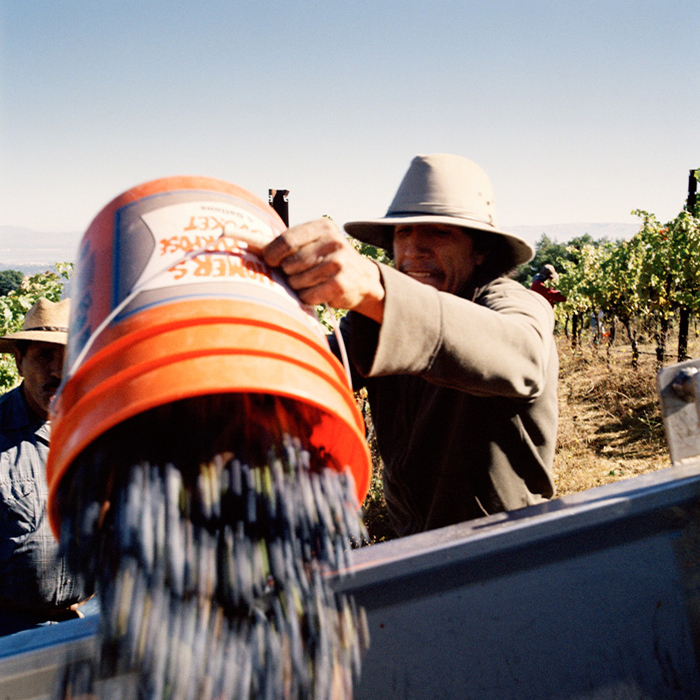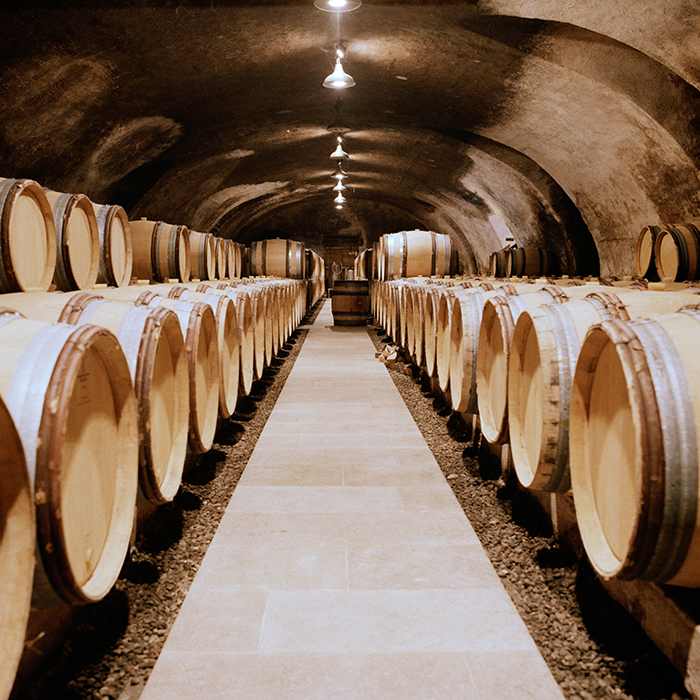How to make wine: red
Author: Barbara Drew MW

A vineyard worker in Napa, California. Photograph: Jason Lowe
When was the last time you ate a red grape? Next time you do, bite into one, give it a squeeze and you’ll notice that the flesh and juice are colourless. In fact, it is only the skin that is red. Making red wine, therefore, is all about maximising extraction of colour from the skins. This also happens to be where a lot of the flavours, tannins and antioxidants reside as well.
But first, let’s think about how you harvest grapes. The bucolic vision of merry families picking grapes by hand is, in many instances, false. In larger vineyards and on flat land, huge machine harvesters come along and literally shake the ripe grapes off the vine, collecting them in a large hopper. While technology has advanced sufficiently that you can still make high-quality wines using these grapes, it does mean that the stems are left on the vine, and, for some red wines, these are – believe it or not – just as crucial as the grapes themselves.
The next step, once grapes are sorted, is to crush them. This releases the juice and then the whole mass of juice, skins and pips is put into a vessel to ferment. This may be anything from a small earthenware amphora to a huge, 50,000-litre stainless steel tank. As the fermentation progresses it produces, as well as alcohol, huge amounts of carbon dioxide gas. This bubbles up through the fermenting juice and causes the skins and pips to very quickly float to the surface of the fermenter and form a compact mass called a cap. The only way to extract enough colour and tannin from the skins for red wine is to continually mix this cap into the juice. This can be done by pushing the cap down below the surface with big wooden paddles once a day (punching down), or by draining the entire tank and spraying the juice back over the cap as it falls to the bottom of the fermenter (pumping over). In the Douro, they have perfected this art of extraction by foot treading. This involves marching and dancing in the open fermenting troughs for four hours after a hard day of picking the grapes – fun, but exhausting.
Other reds can be made using entire bunches of grapes. This is less common, but leads to different processes in the fermentation tank, reducing the amount of colour and tannin extracted. These whole bunches can be used to make lighter styles of wine, such as the fruity, bubble-gum-scented Beaujolais, or a spicy, herbal Pinot Noir.

Olivier Merlin’s cellar in the Mâconnais, Burgundy. Photograph: Jason Lowe
Once the fermentation is complete, the wine needs to be separated from the skins and juice. For most wineries, the wine can simply be drained out of the bottom of the fermenter, and the skins then can be taken away for use as fertiliser, or even to make grappa. For many red wines, the wine will then be put into oak barrels to age, for between one year for a lighter Pinot Noir, to up to (or even over) seven years for some top Spanish reds. During this time – as well as taking on toasty, smoky flavours from the oak barrels – the wine will become more stable, with yeast cells, and some colour compounds and tannins slowly falling to the bottom of the barrel. The result is a wine that feels softer in the mouth, with less drying tannins, and often a rustier hue, as the colour slowly fades from vibrant purple, through crimson and finally to a soft garnet.
Before and during this ageing process, wines are often blended. In Bordeaux, this will involve blending different grapes and vineyard parcels, with Cabernet Sauvignon providing the tannins and vibrant acidity, and Merlot providing plump, velvety fruit to the wine. This can take place before the wine is aged in barrels, or after. Either way, the wine will need time to “marry” together before bottling. For other wines, such as Rioja, the winemaker may choose to blend wines from different sub-regions and vineyards, to provide a balance of acidity, finesse and ripe, soft fruit. Even in Burgundy, where volumes are much smaller, blending is still a key part of the process, with the vintner blending wines that have been aged in different barrels – some new, that add a smoky, toasty dimension to the wine, and some old, that add more of a nutty complexity – to produce a fine wine with many layers of flavour.
The final stage before bottling is filtration. This can help to remove larger unwanted particles, such as dead yeast cells from the wine, and reduce the amount of sediment produced in bottle. Not all wines undergo this, and some producers argue it can remove flavour from the wine. Managed carefully, however, it is an important tool to ensure wines stay in perfect condition on the shelf and in your cellar before drinking.
This article was originally sent to members of our Wine Club. You can find out more about the benefits of Wine Club here. You’ll find the first part of this series, looking at white wine, here.


